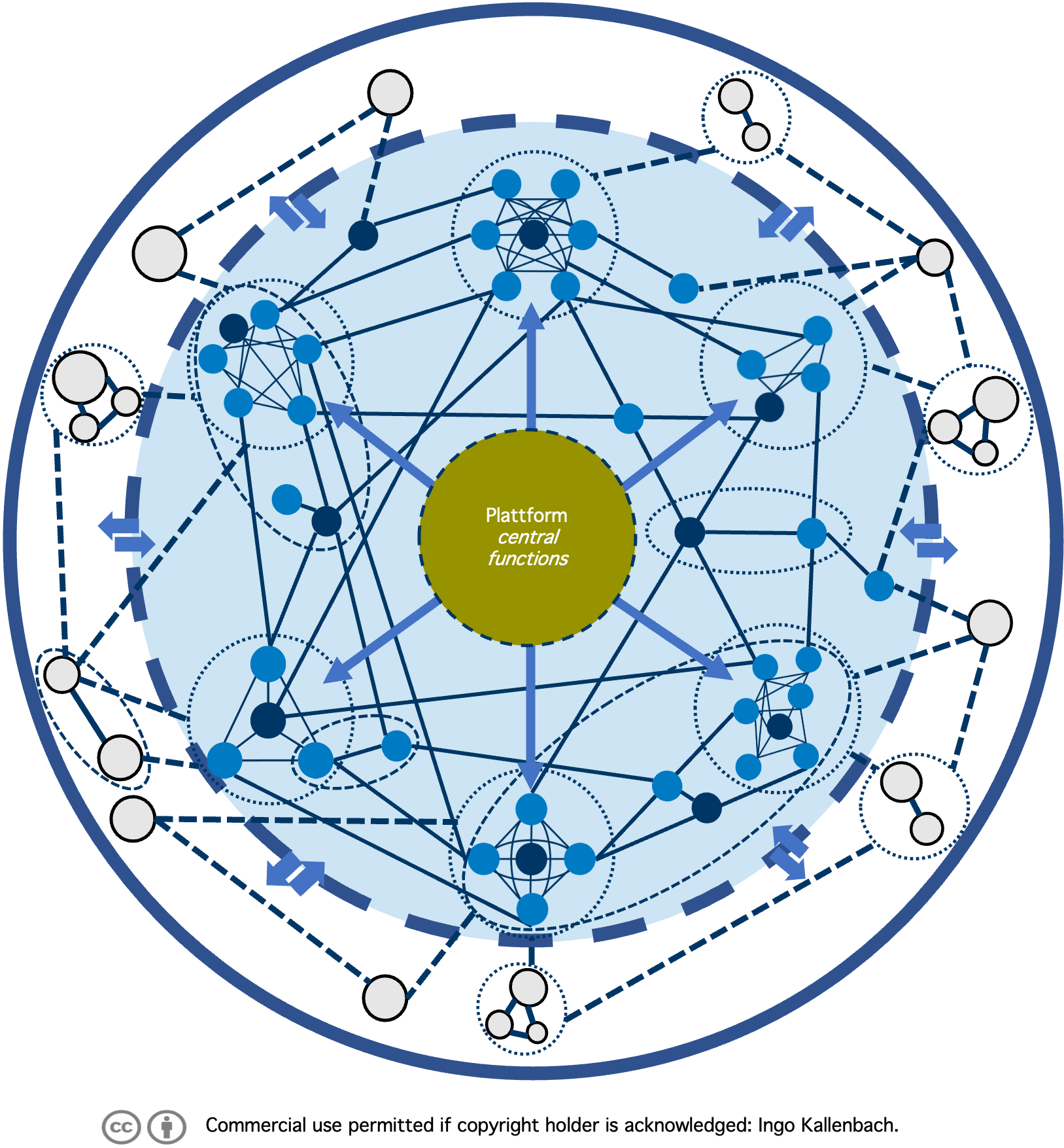Healthy transformation
Successfully implement and evolve Agile organizational designs.
Systemic development of your company.
Shaping change processes successfully
Change management aims at a far-reaching transformation in companies for more efficiency and future security in the company. Change management is used in particular to adapt companies to changing environmental conditions and make them fit for the demands of the markets in the digital age.
Change management encompasses all the components needed to successfully shape change processes - from a company's strategy and structure to its processes and management systems, but also its corporate culture, ways of thinking and behaving, as well as communication, relationships and leadership within the company.
Every change process raises questions among employees and managers about the necessity and goals of the change. By jointly formulating a vision, management becomes the initiator of the change and gives the starting signal for the process. This also has a positive influence on emotional aspects in particular. The emotional aspects generated not only promote the sense of community in an organization, but also the significance of each individual.
Change is no longer the exception, but becomes a daily challenge and opportunity. Become an agile and adaptive organization for which change is not the exception but a matter of course. Along this path, there are numerous new organizational forms that may be suitable for your company: From the agile network organization to holacratic approaches to ambidextrous operating systems in which classic, hierarchical organizational forms harmonize with network organizations.

Why healthy transformation?
The fact is that the world is undergoing a comprehensive transformation process. It is a matter of constantly adapting to a rapidly changing market or being swept out of the market.
Experts and executives agree that the defining characteristic of a healthy company is its willingness to change, as well as its resulting ability to change.
The term responsive organization, in the sense of "responding organization," can be understood as an umbrella term for organizational models that focus on building significantly more responsive structures than conventional forms of organization in a digitalized, globalized, dynamized and unpredictable corporate environment. Very different "operating systems" can be used in a responsive organization. These include holocratic or sociocratic forms of organization, cell organization, forms of network organization and, for example, organizations that use agile methods such as "Scrum".
Individual, systemic transformation!
Your change process can have many reasons. With our 7 dimensions comprehensive change concept we support you in the implementation of your project. Become an agile and adaptive organization for which change is not the exception but a matter of course. On this path, there are numerous new organizational forms that may be suitable for your company: From agile network organizations to holocratic approaches to ambidextrous operating systems in which classic, hierarchical organizational forms harmonize with network organizations. We call this: Multidextricity - A many-handed organizational forms in the same company.
Multidextral character:
- Does not insist on flat, self-organizing teams as the only true solution
- Makes it clear that different areas of an organization can be structured differently
- For certain departments, hierarchical structuring makes perfect sense to ensure efficient operations
- This type of multi-handed operating system creates the fundamental alignment for an agile AND efficient organization

Classic change management has change as its goal, but it is embedded in an environmental context in which stability and predictability are overriding parameters. If changes are identified as necessary, an attempt is made to get them over and done with as quickly as possible.
In an agile transformation, on the other hand, permanent stability is explicitly not intended. It is replaced by a state of permanent review, experimentation and trial and error, the "permanent beta". The stable initial state is thus not followed by a short phase of restlessness and then a stable target state. Instead, a permanent process of adaptation becomes the new normal.
It is not just about change with a defined start and end, with a project plan and corresponding measures, but about the awareness of the necessity and normality of a constant further development of the organization. Thus, the understanding of change as a project project is changing to transformation as a permanent process in which the cultural framework of the organization is made more agile and flexible.
Efficiency is also important in a complex and dynamic market environment, because agile organizations can only be economically successful if they design their value creation as efficiently as possible. At the same time, they should pay attention to individual performance and the development of potential, because simply giving employees free space overtaxes them.
Therefore, agile organizations should implement service-oriented leadership models that are essential in the personal development of all employees. However, many new organizational designs offer no indication of how leadership should be designed. The REFLECT model with its "Adaptive Structures" meets these aspects and combines "the best of both worlds" - i.e. efficiency and agility. At the same time, it offers a framework for individual potential development through balanced leadership.
Details on adaptive systems and balanced leadership can be found in our reference book "Führen in der Gesunden Organisation". We also recommend the GO Check to locate your own organizational design.
Factors for effective and successful change
Many mistakes can happen during a change project that put the success of your change process in jeopardy. We support you in avoiding the following mistakes during change.
Ten typical mistakes and risks:
-
Unclear goals and motives, no answer to the "why
-
Lack of self-reference to goals, no connection to meaning
-
Ignoring resistance, exclusion of employees and their knowledge
-
Understanding change as 'mechanical' and not as 'human
-
No will to change in top management
-
Power struggles and competitive thinking
-
Unstructured approach
-
Insufficient resources, knowledge, methods and qualification
-
Superficial changes without cultural change
-
Lack of "quick wins
To successfully complete a change project, you can use the following success factors as a guide. They guarantee an effective change process with sustainable impact.We support you in making change effective.
Nine success factors:
-
Think systemically, understand causes, symptoms and effects
-
Give a clear answer to the "why
-
create an inspiring and participative goal picture
-
Use resistance and involve critics
-
Build a competent change team including resources
-
turn those affected into participants and use collective knowledge
-
Holistic structural and cultural change
-
Establish clear roles, responsibilities and structures
-
Network information and exemplify transparency
Offers for the Healthy Transformation
Target image workshop
Mission statement for the realignment of the organization
The health check for companies
How healthy is your organization?
Impulse talk
Leading in the Healthy Organization

These experts support you in your healthy transformation
.jpeg)
Ingo Kallenbach
Manager REFELCT
Andreas Jobmann

Klaus Eckrich
REFLECT Notes
Want a dose of inspiration? We provide you with in-depth know-how and exciting insights on the topics of agile transformation, leadership and HR development.
Gesunde Organisation
REFLECT im Gespräch mit Christian Harms zur Einführung Kollegialer Führung bei dm
Christian Harms ist seit 1996 ein echtes dm-Kind. Nach seinem dualen Studium, das er 1999 abschloss, |

Change-Management
Die Königsdisziplin der Führung: Wenn kognitive Empathie der Schlüssel zu erfolgreichem Change Management wird
In Unternehmen geht es um die harten Fakten von Technologien, Kennzahlen, Profit. Da ist für Sozialromantik kein Platz.

Whitepaper
Once downloaded, our free whitepapers are available to you at any time as useful reference works or also for impulses in your work. Choose - according to your interests - and benefit from our know-how.
Let us strengthen your opportunities together!
I look forward to hearing from you.



